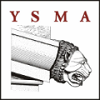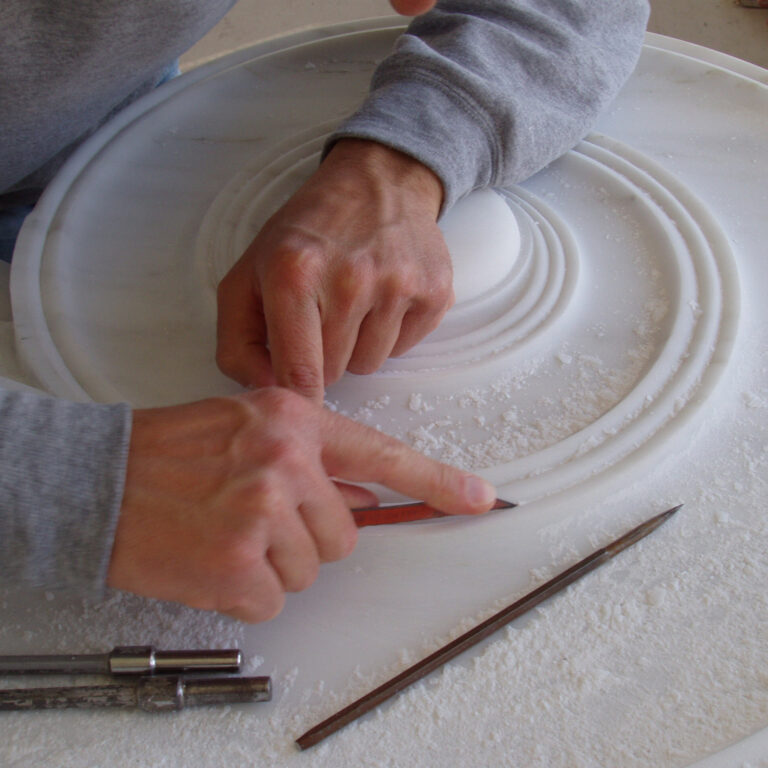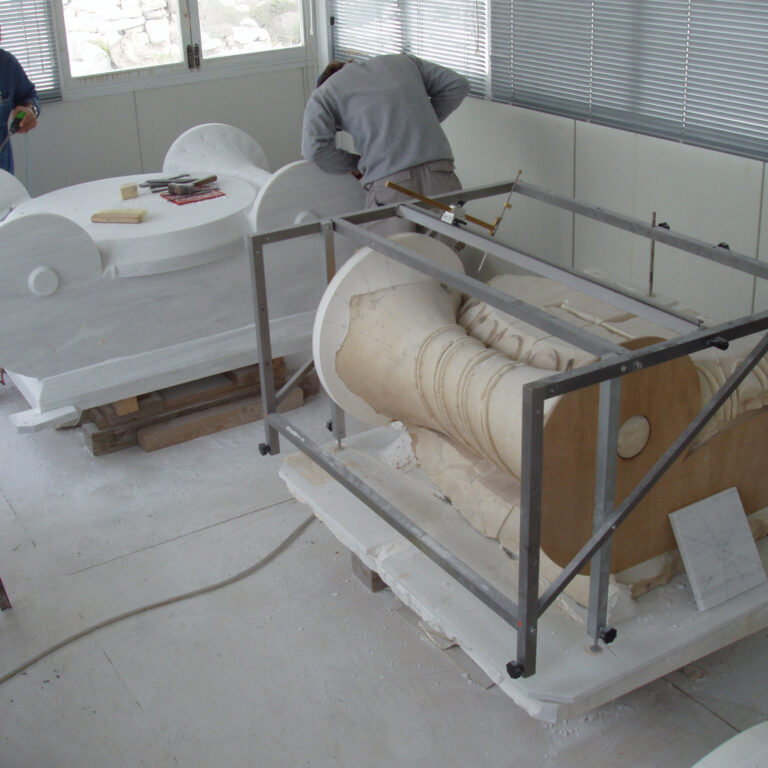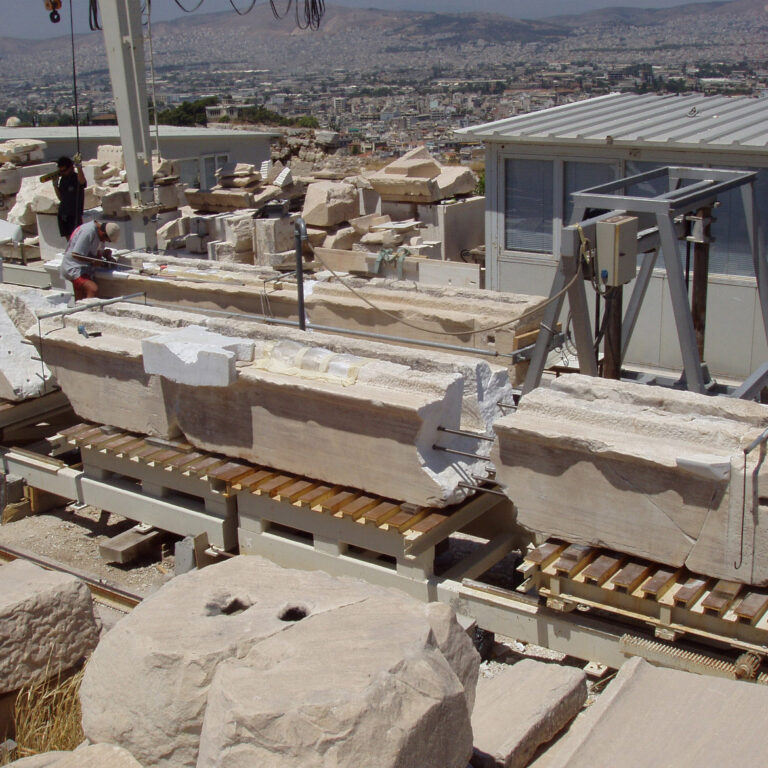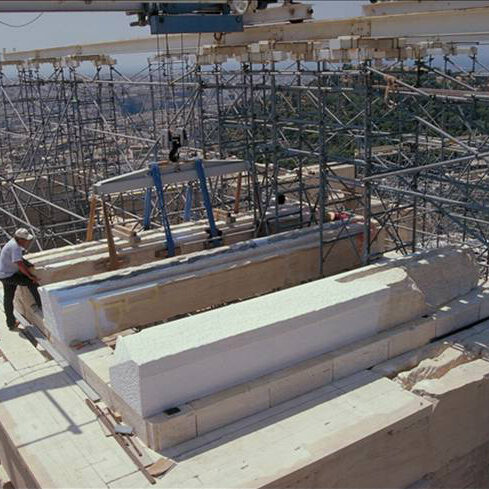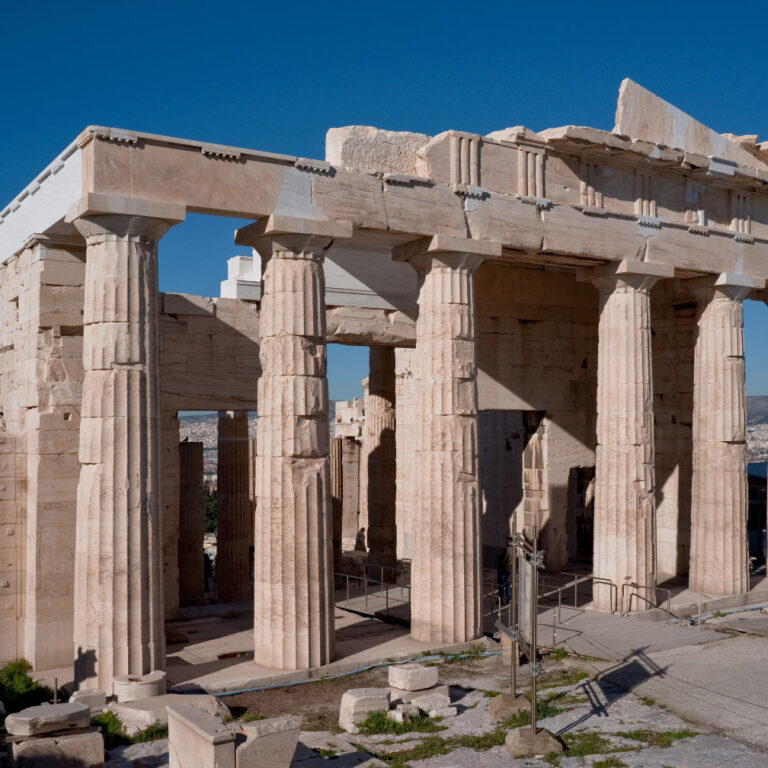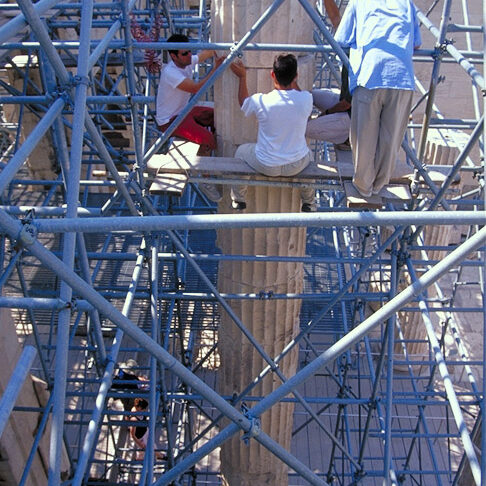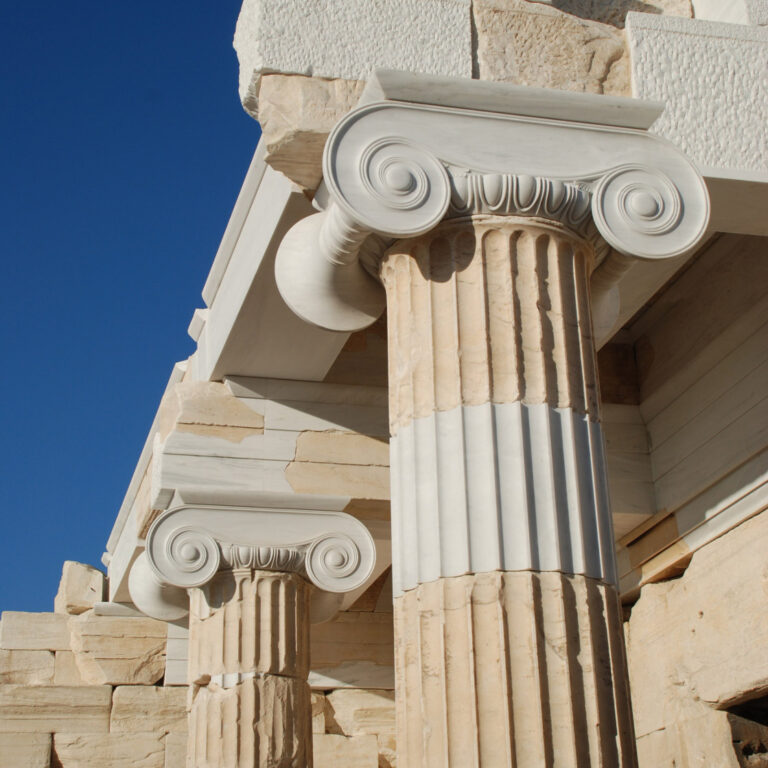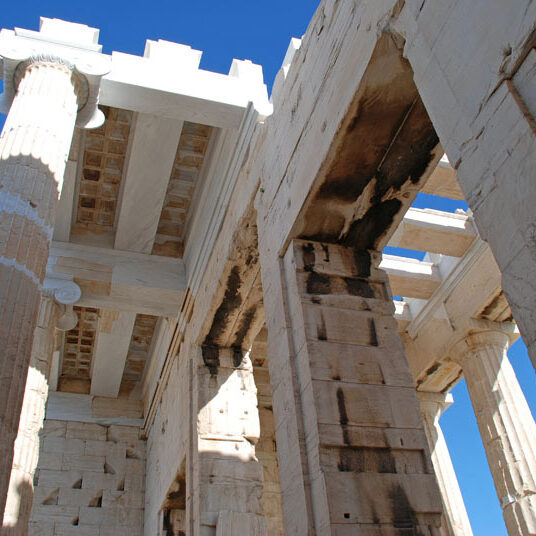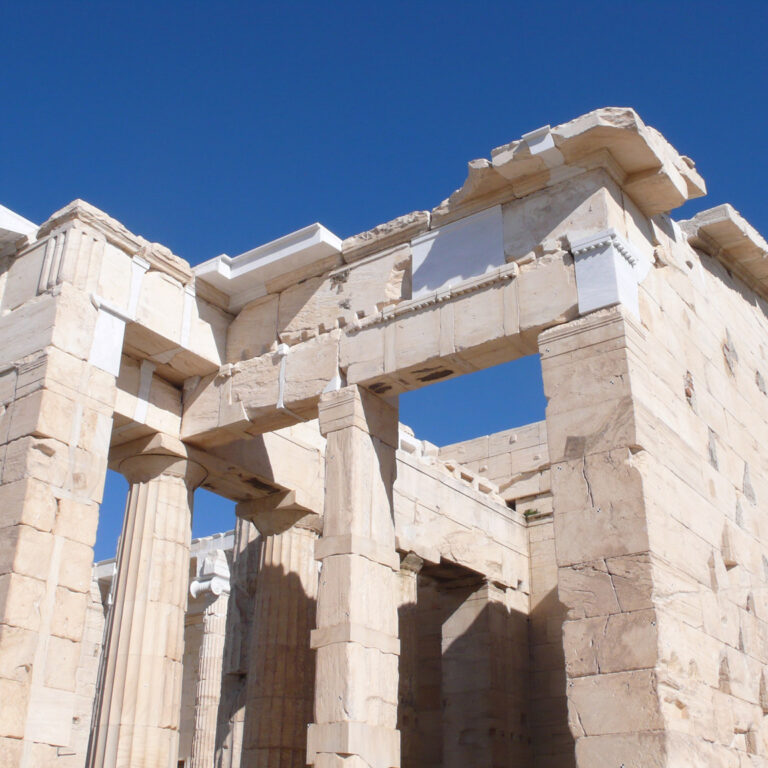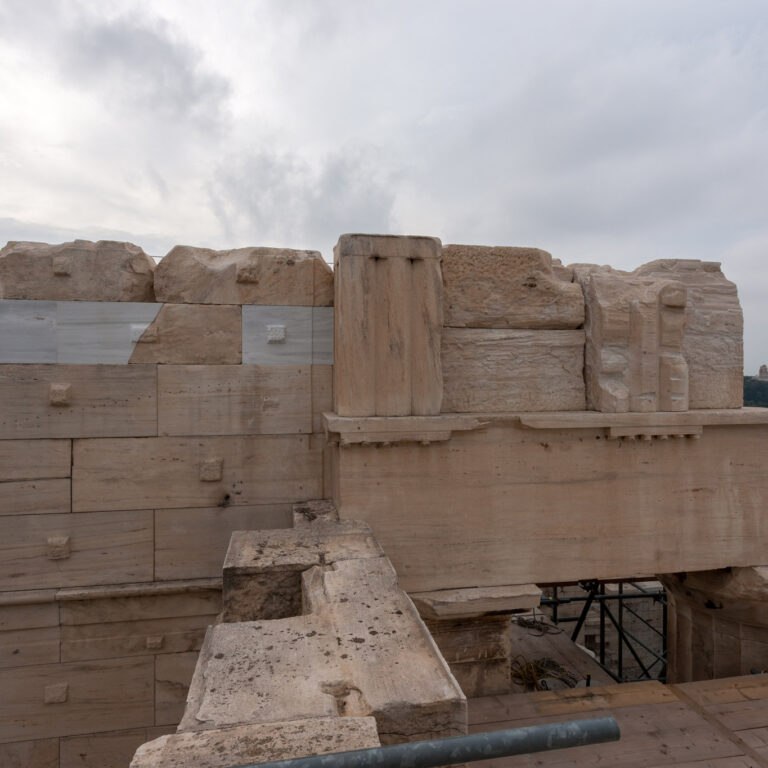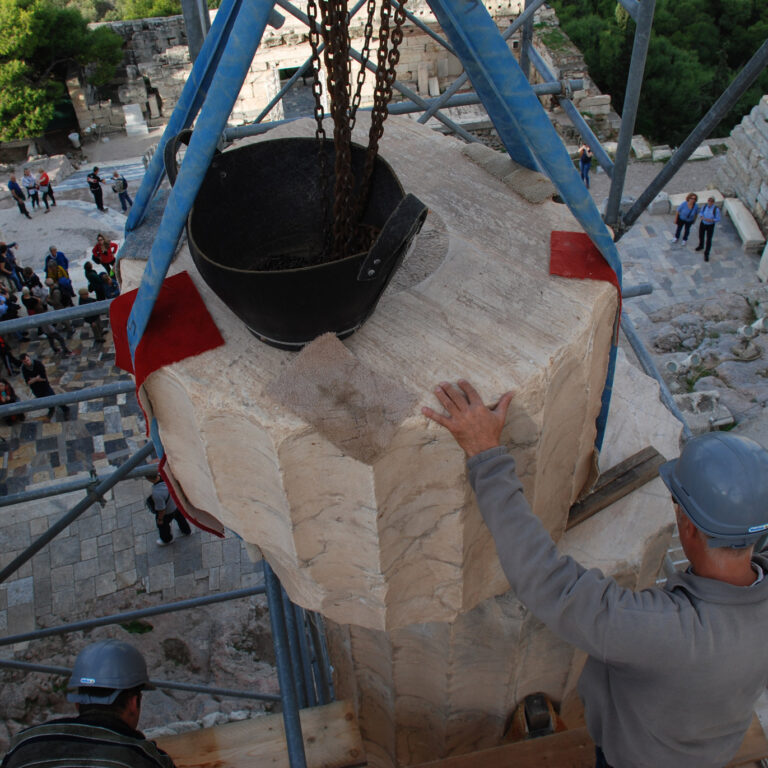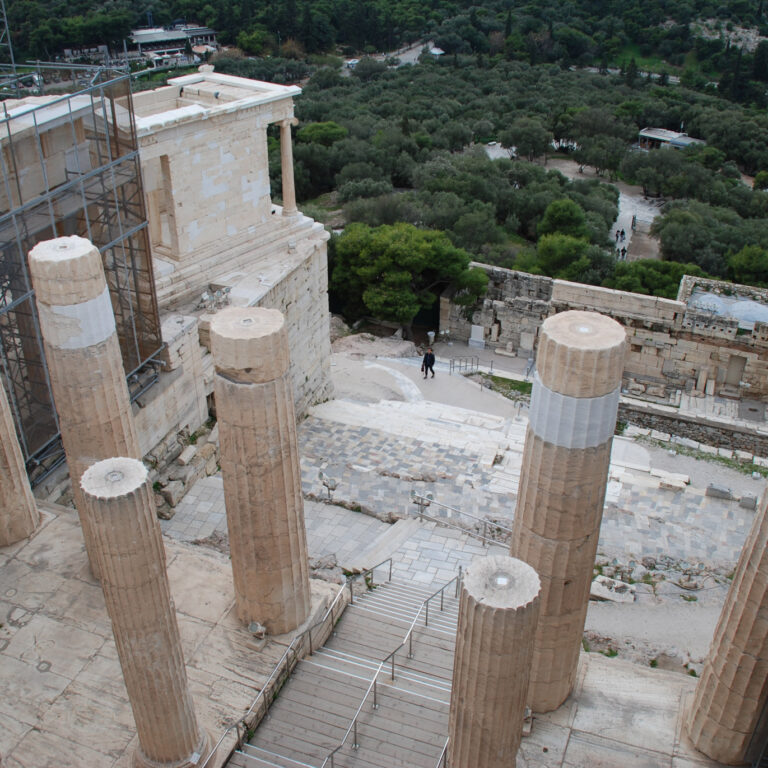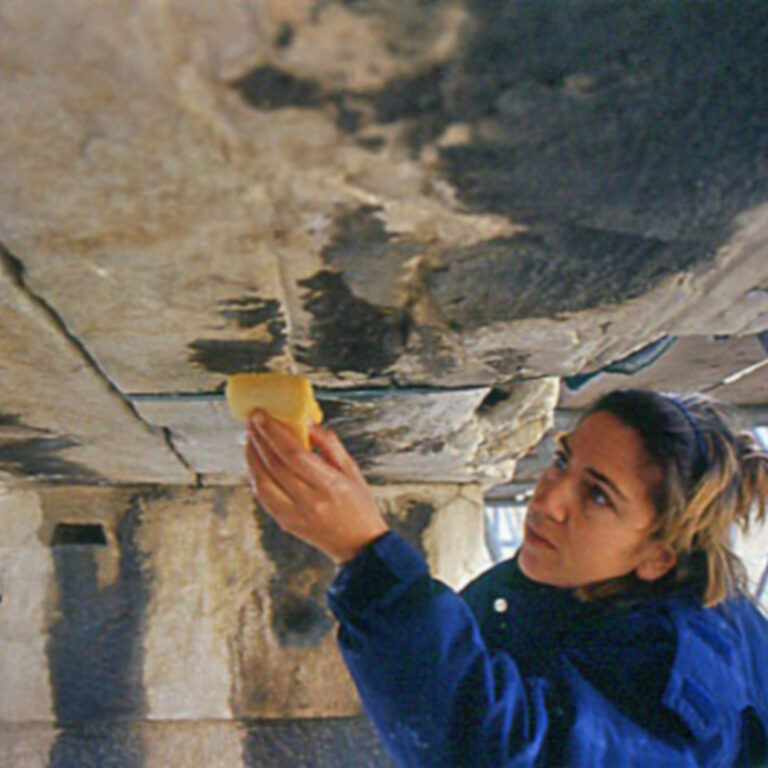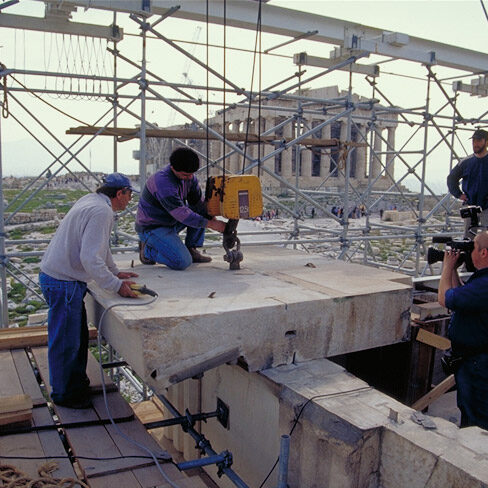
The damage caused by the methods employed in the restoration of N. Balanos and the extensive effects of atmospheric pollution on the monument have made it necessary to undertake a full-scale conservation intervention.
In 1981-1982, the second-from-south architrave block of the entablature of the east portico of the Propylaia was restored, following the study by A. Tzakou and M. Ioannidou. The intervention, which included dismantling the architrave and its adjoining architectural members, their conservation on the ground and resetting on the monument, repaired the damaged architrave and adjoining members caused by the rusting of the iron reinforcements used in the Balanos anastelosis.
In 1990, the dismantling of the restored coffered ceilings of the central building of the Propylaia was begun, a procedure that was completed two years later, in 1992. At the same time, a study was initiated for identifying the fragments from the ceiling coffers and beams. This was completed in 1996 and as a result a large number of coffered slabs were obtained that could be used in the new restoration.
In 1998, with the approval of the relevant study by T. Tanoulas and M. Ioannidou, work began on restoring the south wall of the east portico of the Propylaia. A total of 38 blocks of the south wall and the architrave block that connects the south wall with the southeast Doric column were dismantled. After their restoration, the architectural members were reset in their original positions. The work was completed in 2001. Consolidation and conservation of the central lintel of the Propylaia was begun the same year.
In February 2002, the big project of restoring the superstructure of the central building of the Propylaia was initiated, based on the relevant study by T. Tanoulas and M. Ioannidou. During the course of the work, special application studies are being made by the civil engineers V. Paschalidis († 2003), V. Papavasileiou and the architect K. Karanasos. In order to perform the work it was necessary, in addition, to dismantle the rest of the architectural members that had been restored by N. Balanos. Two inserted programmes, the need for which became evident while the study was being applied, have already been completed: the restoration of the north wall and the restoration of the east colonnade of the central building of the Propylaia. In each case it was found that Balanos’ intervention was more extensive than had been supposed on the basis of information in the publications, Balanos’ archive and from the study of the monument itself. In the course of the ESMA intervention, a total of 55 architectural members of the north wall of the Propylaia and 35 architectural members of the east colonnade were dismantled. The members were then restored and reset, an intervention that was completed in 2004.
Ιn 2011 the restoration of the south wall superstructure of the Propylaia central building was realized by using material lying on the ground and by rearranging previously restored marble blocks. Eight blocks lying on the ground were placed in their original positions; eight blocks, restored during the Pittakis-Rangavis intervention, were rearranged; and three more blocks of new marble – of which one was an exact copy of an ancient member kept in the British Museum– were incorporated into the monument. The project was carried out following the architectural study of the architect Dr K. Karanasos
Between the years 2012 and 2015 the programme of restoring the southwest wing of the Propylaia was implemented. The works sought to fully utilise the remaining authentic material in order to restore this part of the monument. In particular, 40 architectural members found lying on the ground were positioned in their initial positions on the monument, 9 architectural members, which in the past had been placed in the wrong areas, were rearranged, while 2 more new architectural members were added.
The architect Dr. T. Tanoulas conducted the architectural study, while the civil engineers M.Ioannidou and V. Papavasiliou were responsible for conducting the structural restoration study. This programme came to complete the restoration interventions carried out on the south wing in the years 1946-1954 and 1957-1960 by A. Orlandos and E.Stikas; it is considered to greatly contribute to a better understanding of the monumnet’s architecture.
Another restoration programme, crucial to be realised, was the one in the NW corner of the central building, an area facing serious static problems, not only due to anthropogenic factors (e.g. explosions), but also because of deficiencies of the materials used. The intervention was based on the study by K. Karanasos and M. Ioannidou. Serious static problems of the capital in the northwest doric column of the central building and problems regarding some architectural members of the overlying entablature were solved.
In total, this capital and ten more architectural members were dismantled, which after being restored on the ground, were placed back in their initial positions together with 5 more blocks. Three more ancient blocks which had been found on the ground were placed in their initial position on the west end of the wall while two blocks made of new marble were essential in order to facilitate this task.
On the occasion of this intervention it was decided to place back 4 ancient drums and 1 drum made of new marble on the doric collonade of the west façade, which is also considered to have contributed to the educational value of the monument, especially with the use of ancient material found on the ground.
